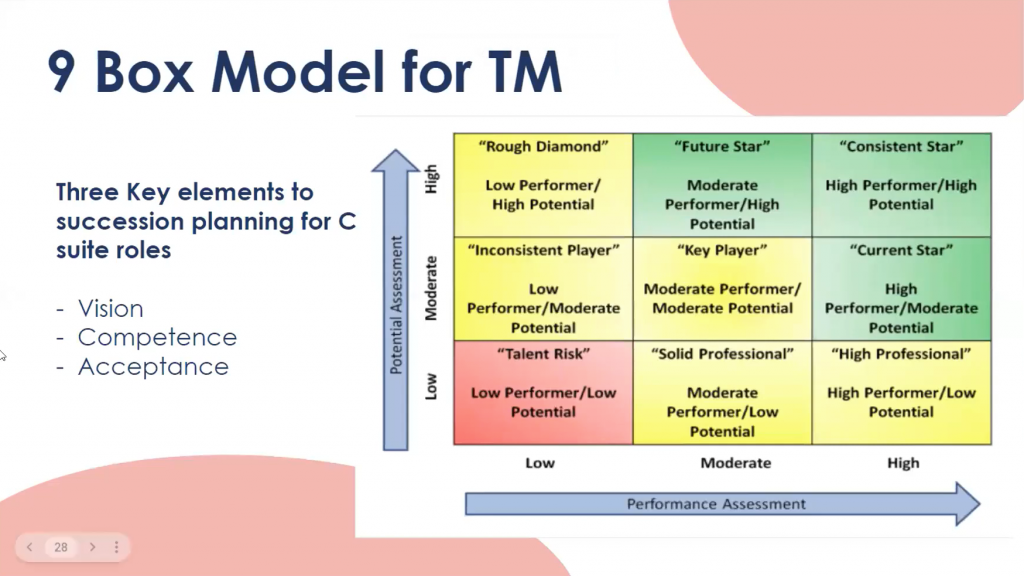Succession is a part of growth. Leaders from any walk, whether from non-profits, informal volunteering groups, or corporates, must always think about nurturing the next generation of leaders to take their place.
But very few organisations have roadmaps that help them navigate the transition from one leadership generation to the next. Even those with detailed plans in place sometimes miss a step, inadvertently choosing unqualified successors or losing the confidence of the rest of the team.
While leadership succession is a challenging process, it is a necessary step in the growth of one’s organisation. Communities that do it right ensure the growth and longevity of their organisation’s success.
The Community Matters team held a recent webinar as part of the Community Leadership Series to discuss the best practices we can adopt in Leadership Succession.
You can watch the webinar, entitled Thinking About Leadership Succession: Groundups, Nonprofits & Communities, here.
Qualities to look for in future leaders
“When you’re running a large organisation or an organisation which has a high impact, in my mind you cannot leave succession to chance,” says Shaily Gupta, Chief Advisor – Human Resources Consulting at Engee Advisors.
Replacing one leadership generation with another is simple for family-run companies (just get the oldest son, job done!). Even some communities, until lately, approached succession in a similar ad-hoc manner.
“Leadership succession back then was done by just trying to convince someone to be your successor!” recalls Ng Yi Qi, advisor and former chairperson for Volunteer Guitar Connection (VGC). “Just like how I was approached; someone would say ‘Hey, I think you got very good leadership qualities, would you like to take the group forward?’”
Over time, Yi Qi realised that this approach was not sustainable: “Our job was not just about running the operations today;as we grow, we need to help our volunteers grow as leaders too, so that our group continues to exist tomorrow, 5 years, 10 years, 20 years down the road.”
For Shaily, succession sustains the long-term mission for the community, and helps the beneficiaries we’re working for. Getting succession just right doesn’t happen by accident, says Shaily — “it requires tremendous planning.”
Succession begins by recognising the leadership qualities that will serve the organisation best in the long run. In her consulting practice, Shaily has distilled these qualities down to four essentials that hold true across communities:
Vision
Even as leaders deal with day-to-day concerns, their actions should be motivated by a forward-facing vision for the community. Leader candidates should be motivated by the desire to keep the community serving its purpose for the foreseeable future, and not just manifest a vision for vision’s sake
Competence
Leader candidates must demonstrate a track record of high-quality performance and a focused passion to make things happen for the community. These future leaders should possess not just hard skills necessary for the role (measurable abilities like accounting and digital know-how) but soft skills as well (interpersonal abilities like empathy and perseverance).
Acceptance
According to Shaily, a value that is often neglected in succession planning (yet is just as important as the rest) is the leader-candidate’s acceptance by the rest of the community. A leader might have high scores on other attributes and be gung-ho about the job, but they don’t count if the rest of the community is unwilling to get behind their vision.
Willingness
Shaily asks, “Is that person’s heart and mind there to be a successor?”. One can’t force leadership onto someone who’s unwilling to take up the burden. The myth of the “reluctant but capable leader” is just that — a myth, as a leader’s capability can be compromised if their heart would rather be somewhere else.
How different communities plan their succession

Build a sustainable talent pipeline
Does your community have young members with leadership potential? Do you have a way to recognise those volunteers who add more value towards your community’s mission?
Shaily draws from her corporate experience and references the nine-box talent management framework: “We use this where succession is planned for all critical roles in the organisation,” she explains. Community members might be positioned in the framework according to their present performance and future potential, as determined by periodic assessments.
Leader-candidates on the right-most column might be better placed to assume bigger leadership roles in the future: “your green boxes are the ones who could possibly be your successor,” Shaily explains.
That said, future leaders do not consistently travel in a straight line up the green boxes. “You could possibly be surprised because people can move across the boxes — I could be in a green box this year, I could fall back to the yellow box next year,” Shaily says. That’s why the hunt for qualified successors should be considered over the long term: “You need to see consistency of performance over a period of four to five years.”
Focus on the whole organisation, not the candidate
Tim Lee, CEO of the charity Caregivers Alliance Limited, emphasises that succession planning should ultimately be for the benefit of the groups that the organisation seeks to serve.
“Succession planning is to make sure that the organisation succeeds,” he says, explaining that the incumbent leader(s) should continuously seek to build up the organisation such that it is not dependent on any single leader or critical staff but well able to deliver on all fronts continuously. Hence succession planning is not just focused on the top leaders but aimed at strengthening leadership bench strength throughout the organization. This should include identifying future talents and investing in their leadership development. When the organisation is strong and stable, a change of leadership at the top can be cushioned even in the case where the new leader might turn out to be a wrong fit.
Tim also suggested that succession plans need to be reviewed as the goals and priorities of the organisation evolves. For him, he is continuously on the lookout for leadership talents who show potential in cognitive ability, people agility, change and learning agility and who are highly motivated and resilient.
Get everyone on board with the succession plan
Acceptance issues can be mitigated by involving more than just the board in the succession process. “It should also involve managers on the ground,” Tim explains. “Have a performance roundtable where you involve the managers, to let them give comments about performance within the organisation. Let them look across their department to see people with high potential and collectively own their leadership development.”
Smaller communities might consider allowing members to choose the successor directly. “We allow active volunteers to vote for the next chairperson or the next leader,” says Jeremy Kosman, the present Chairperson of VGC. “This way it’s fair and it gives the volunteers a voice.”
Choosing an external successor vs. searching internally
While you should prioritise finding a successor from the present members of your community, it can’t always be helped: if you can’t find a potential successor within the ranks, extra care must be taken to ensure acceptance by other stakeholders when bringing a new face in.
Shaily suggests shadowing the successor for up to two years after the turnover, “To create that acceptance (for them), to create that environment so that (they) can excel—and act as a bridge between the people and (the successor) so that (they)can settle down in that role.”
More succession planning experiences
During the webinar, the participants broke out into small groups to share their succession planning experiences in their own communities. Here are some of the insights they shared:
- Embrace diversity. Show empathy with younger members, empower them instead of dismissing them. Young people may have different views from adults, but they’re not often wrong.
- Look at motivation of leader-candidates. Not all volunteers are fully aligned with the community’s mission—do they care more about hours on the job, titles, and other non-intrinsic things? Or are they volunteering to give themselves to the larger cause?
- Prime the leadership pipeline. Ensure a larger pool of qualified candidates, by laying the groundwork: things like creating collaborative teams where people learn from each other; judging candidates by capability rather than seniority or qualifications; or exposing future leaders to different roles within the community.
- Engage relevant stakeholders in the interview process. By getting their participation early on, they can be supportive of the new leader, and assist in the leadership’s development and onboarding.
- Open communication channels. Volunteers also want to be heard, and it’s important to ensure they can express their opinions about the new leadership or the process.
Preparing the community for leadership transitions
No two succession plans will look the same across different communities. Specifics will depend on the sector and groups being served, as well as the community context and structure. That said, the desired outcome is shared across communities: a refreshed leadership that helps the community continue to grow, be sustainable, and increase in their impact.
Leadership succession is a key component of the community journey. As volunteers within a community learn, mature and take on more responsibilities over time, leaders must actively find individuals who can help sustain their community mission in the long run. This means building a succession plan and changing it as the mission (and your staff or volunteers) evolve.
For a structured guide to help you plan your community’s future through succession, download the Community Journey Journal for Developers here.





















